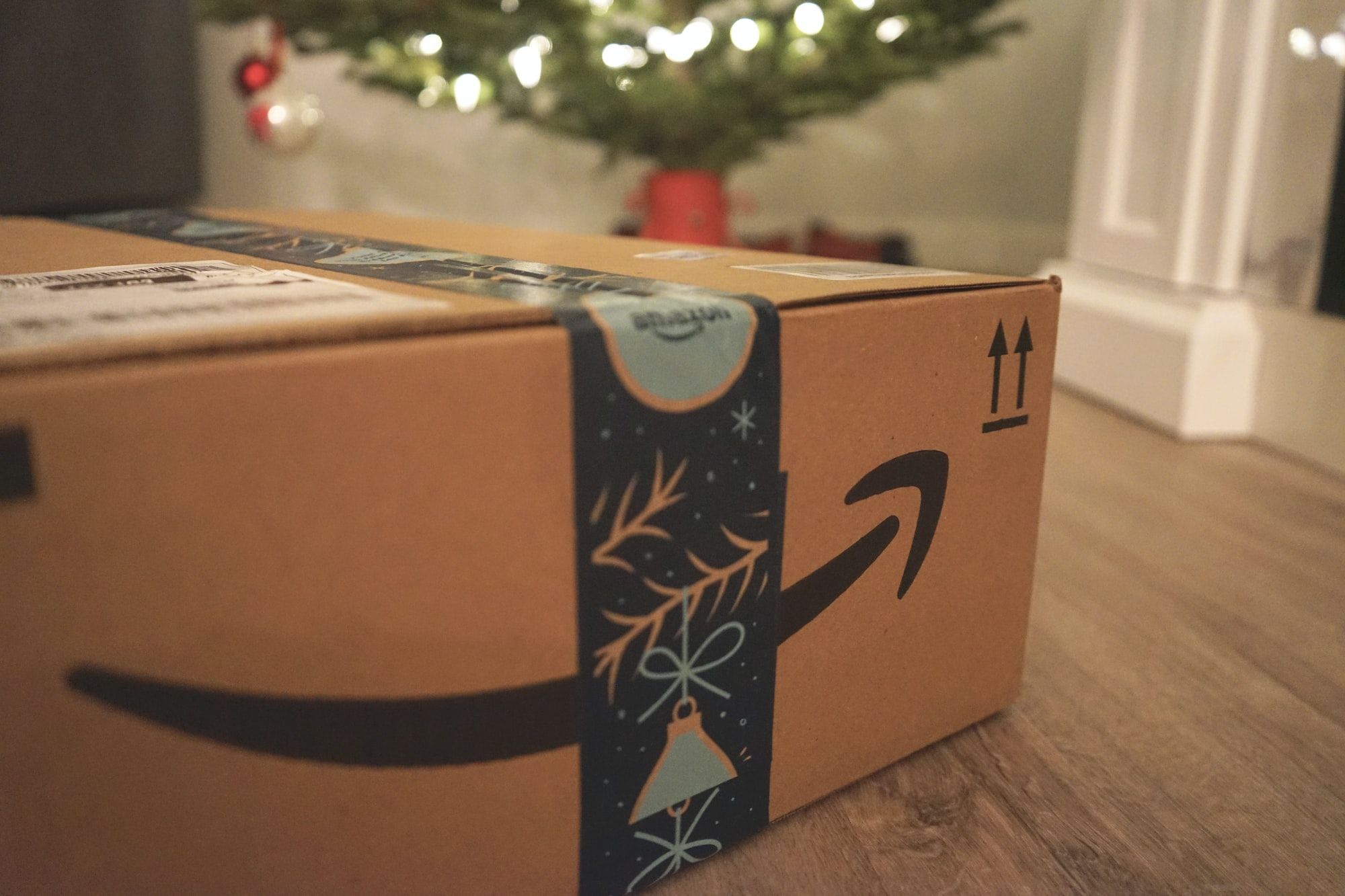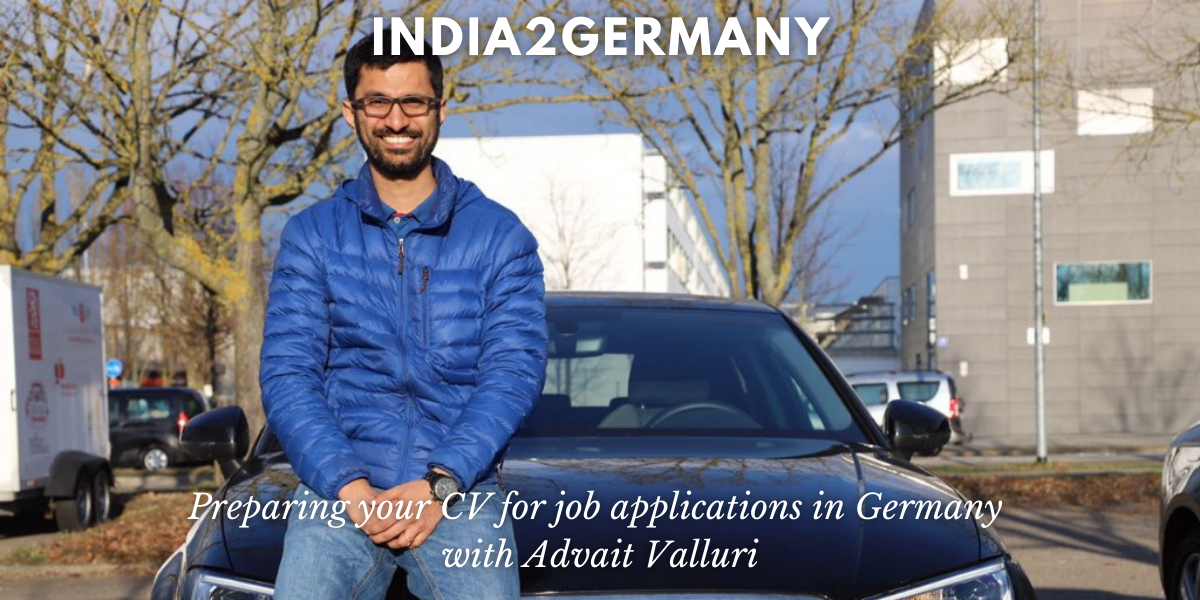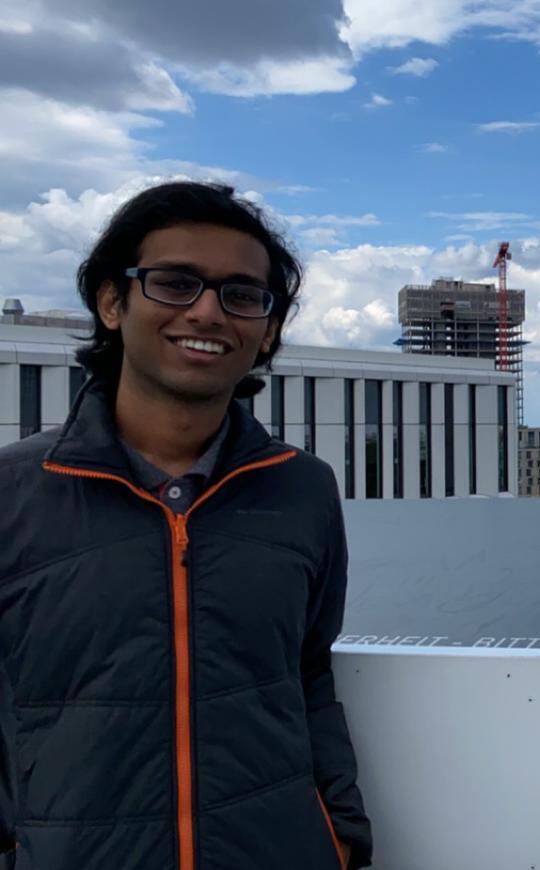
The technology behind Plantix with Dr. Ivan Kalev
Ivan explains the technology that underpins the AI- and computer vision-driven app, Plantix, which is helping millions of farmers in India and all over the globe, and career opportunites for working there.
Plantix is an agri-tech startup from Berlin which uses AI and computer vision to help farmers in India and all over the globe in identifying plant diseases and improving crop health. Dr. Ivan Kalev, Head of Engineering at Plantix, shares some great insights about the technology that drives the company's solution and gives many suggestions for those who want to work there. Ivan has more than 15 years of experience building scalable software systems and leading tech teams.
Hit Play to listen to this conversation and Follow to get notified about upcoming episodes.
📬 Get the latest India2Germany articles via email 📨
Ivan, what is it that brought you to your current role at Plantix?
I'll start with my background dating back to my childhood to give some perspective. I have a very diverse background between biochemistry, genetic engineering, computer science, and software engineering. And that is pretty much on purpose, I have to say. This is because interesting things happen when you bridge different domains. When you're an expert in more than one thing, you usually look at things and problems from a different angle, you also tend to discover new and interesting problems to solve and your approach to solving them becomes quite novel, or even more successful than before. I quite enjoy bridging different domains and working in different fields. Over the years, I've worked in many different domains myself. When I was a kid, I, of course, enjoyed playing with toys and video games as my buddies, but that wasn't somehow enough. I also wanted to know how these toys were built if I could rebuild them myself, or maybe invent my toys. These things always sounded awesome. Same with programming. I ended up learning Basic by myself when I was a teenager and built my own poker game, which had a fatal flaw in its random generator. So eventually, it would deal the same cards every time you restart the game. Yet that was still very exciting for the time.
On the other hand, being raised in a healthcare family, with my father being a doctor and my mother being a microbiologist, I deeply cared about healthcare myself, about biological sciences. Questions like what makes us tick? How do our bodies work? And how can we fix them when they break? Can we even invent new bodies? These kinds of topics always piqued my interest. So when I first heard about Bioinformatics, I was in high school at the time wondering what to do next with my life, my mind was blown. Because biological sciences and computer science are two of my favorite topics, basically my strengths, so combining them professionally, and for a good cause, such as sequencing the human genome, solving difficult problems, eventually fixing a lot of difficult diseases, it felt like a good cause along with a fulfilling career.
Naturally, I wanted to become a bioinformatician and I did. I started genetic engineering and molecular biology because I figured I can do computer science on my own. However, studying biochemistry in your bedroom; good luck with that you might need it a lot. After I graduated, I started working as a bioinformatician for a few years, getting good at software design, software, construction, and database theory. But something was missing. Something was truly missing. At that point, I could build clean code. I regarded myself as a software craftsman, and I deeply cared about this craft. But I couldn't quite explain why this clean code still doesn't scale well, or does it scale well? and if so, why? So I felt I need to get better at the fundamentals of hardcore computer science and I moved to Germany. After four years in bioinformatics, I moved to Baden-Württemberg in the south of Germany, without knowing how to speak a single word in German. That was pretty brave. You know, Baden-Württemberg is not like Berlin. In Berlin, you can speak English and get away with it. In the south of Germany, it's more difficult. Anyway, that wasn't by any means the only challenge. It was science so I started a PhD in bioinformatics and computer science, which comes with its own sets of challenges. It opened my mind to hardcore computer science, and ticked off that box for me, and made me feel more solid in what I do. After that, I moved to Dublin, the Silicon Valley of Europe or so they say.
You know, big tech companies are in Dublin and eventually I wanted to join one of them. So I first worked in stock trading for a while; very hard problems, combining data science and software engineering. But the purpose was missing. Why are we trading stocks? How do we move the world in this way? You know, the healthcare aspect was missing. And then I wanted to eventually join Google or Facebook. But there weren't any real engineering positions in Dublin at the time. So the closest I could find by accident was Qualtrics, which was founded by Jared Smith and his brother, Ryan Smith. He’s a very famous guy from Google, you may have heard of him from WordPerfect, a very successful person I look up to.
And the CTO was John Thimsen, whose team built Alexa at Amazon, a company with a very high hiring bar, strong engineering principles, no surprise coming from Amazon and Google. And I was surrounded by truly bright people, some truly exceptional people who I learned from. That was also my first dive into SaaS, microservices, scalability, and that kind of stuff, but it also opened my mind to building a company with a very high hiring bar. And essentially, how do you build a high-performance team? At that time, I was already getting good at building high-performance systems. Well, what about teams? Those are systems too. They also need to scale well. It was a blast for me, and I built together with a great team of 20 people. I was very sad to leave it. But then my German wife and I decided to start a family and thus came to Berlin. This is where my journey with Plantix started. I was not quite aware of Plantix, so it wasn't until the time they approached me that they it clicked in my head. For me, it seemed like an interesting return to bioinformatics while helping farmers across the globe along with solving interesting problems all for a good cause.
Could you tell us a bit about Plantix?
Plantix started in academia during the PhD of the founders. Me being a scientist, I love this aspect. I love it when an idea starts at a very fundamental level. So these guys were doing their PhDs in geography and of course, being very interested in agriculture they were also trying to help farmers improve their yields and save their crops. But the issue with academia is that you don't necessarily reach a lot of people. There are millions of farmers in India who need help. Those are small-scale farmers who cannot afford to hire a professional agronomist. But still, these people are suffering from a lot of issues like crop damage, and they need help. So the professor asked ‘Why don't you scale this up and build a company?’. And so they did. They moved out of Hanover and came to Berlin where they can hire international talent more easily, and started Plantix as a startup.
The core of Plantix is the idea of detecting crop diseases automatically, so farmers can access that service for free and eventually, live better lives.
The idea of Plantix is, of course, to take a picture with your smartphone of the crop, and then eventually, we could try to diagnose the disease and recommend a medicine. So that is the premise of Plantix. We do other things too, such as recommending specific chemicals or a set of chemicals that you can use to treat the disease. And hopefully, we can recommend a less toxic one. So in this way, we also help a little bit towards reducing unnecessary chemical pollution. Just like the case with antibiotics, where when they are recklessly prescribed for anything, they end up losing their efficiency since the bacteria develop resistance. The same happens with insects who can develop resistance. You know, insects evolve quite quickly, much like bacteria because of their massive populations. So recklessly prescribing chemicals results in both pollution and resistance.
By being able to diagnose the disease accurately and quickly, we can help farmers have a more targeted treatment.
How do farmers use Plantix?
There are now two ways to enter Plantix. A new development is a WhatsApp chatbot where you can simply take a picture, upload it on WhatsApp and send it to us. This will trigger our health check algorithm and you receive your diagnosis back on WhatsApp. But of course, the bread and butter of Plantix is the Android app, which farmers install on their phones and can use to take a picture of the crop. Once you take a picture of it, it will get uploaded to our back end infrastructure in Berlin. Our machine learning algorithms will kick in, start crunching some numbers and eventually spit out a diagnosis. If you are currently located in an area that is supported, we will eventually be able to refer you to a shop around where you can go and pick up recommended medicine.
How does Plantix use AI?
Right, as I mentioned the health check algorithm is the bread and butter of Plantix. We have a fleet of microservices here in Berlin, we maintain the infrastructure. Two of them are doing machine learning. Under the hood, we have trained a neural network using image labels obtained from real specialists. So we hire experts who label sets of real-world images of plants with potential damage to them and diseases. And they label and annotate them. These are big sets of images that we use to train our neural networks. We use those networks to recognize features on the images, first recognize the crop and then second recognize potential damage on the crop itself and classify it as a disease. And if it's a disease eventually be able to say exactly what type of disease it is.
How accurate is Plantix at identifying diseases?
So, of course, the right person to give you the precise numbers would be the tech lead in machine learning. The last numbers I have are between 70 and 80% accuracy. And just yesterday, again, we had this debate, what good accuracy is. Good accuracy is context-dependent.
📬 Get the latest India2Germany articles via email 📨
What kind of engineering problems do you and your team work on at Plantix?
Right, so several interesting problems emerge in this domain. They are divided into two main buckets. On one hand, we have to handle a certain scale. We're a SaaS company, we run in the cloud. So all of these software engineering and cloud engineering problems are common and we have to solve them. On the other hand, we do machine learning. So we're dealing with models that need to be trained; this is the second class of problems.
Let's start with machine learning; we started Plantix with around 40 crops; we launched with the most important crops in India and we're gradually working to expand its coverage. This is hard work. And it's also cross-functional because our machine learning engineers have to work together with those plant experts, create new sets, label them, and then train those neural networks. This is hard work, but also computationally expensive. We use GPUs for that. And there are quite a lot of challenges involved. Just last week, someone shared an article about people advocating for essentially building a clone of Plantix in one day using Google Cloud services. It's great to see technology advancing and becoming more accessible, we had a good laugh since it took us a few years to optimize our models. And of course, you cannot build a competing version of Plantix in a day. So training those machine learning models still takes time and effort. But this is not the only thing we do. Of course, apart from expanding to new crops and diseases, we also have to improve accuracy. And I love that you mentioned accuracy here. So we are constantly trying to improve the accuracy and also the sensitivity of our approaches; this means staying on top of the current literature in this domain. Also, in recent advancements, we are trying to do a lot of research and experimentation for that extra 2%, extra 3% accuracy. That's another class of challenges we are facing at the moment and are working hard on.
The third class problem is us also trying to improve our models in different ways and also add new models to the mix. Just a few weeks ago, we launched a new feature; we've trained a new neural network to recognize quality issues with the images farmers are uploading. So if you take an image from too far, or the image is too blurry, we're going to again label that and eventually provide meaningful feedback to the farmer, such as suggesting them to come closer to the crop, holding the phone still, etc. We are also launching a new model right now which recognizes trends of pathogens and diseases in a specific area. So we can send a push notification to your phone and warn you upfront that there are rising levels of a specific pathogen or specific disease in your area. That's on the machine learning
On the backend we have a certain scale to deal with. At around 30 million images in total, millions of images per year, and 10s of thousands of daily active users along with more than a million users of the app in total, this is not quite Google and Facebook scale, but is not negligible either. So we have to make sure we're building systems that are resilient, well tested, stable, and observable.
What is it like to work at Plantix?
Plantix is a startup and not a very big one. We are around 100 people at the moment so the startup spirit is still alive and well. Of course we are maturing, trying to be more structured, and introduce certain processes but not in a rigid way. Plantix is still a very friendly place. It feels like a bunch of friends working together; very welcoming. And we joke that we have a diversity problem in engineering in Berlin because by accident half of our team are people who have something to do with music. We also have a few people with music degrees in music production, sound engineering, etc. I even interviewed another candidate last week who had yet another degree in sound engineering purely by accident. This is a joke, of course, we are very open, though it's not a joke that we have a lot of musicians, I also play the guitar myself. But we're very welcoming towards people of any race and gender. I still want to see the time where we will have more women in technology, but not by compromising the hiring bar or rigging the system.
Plantix is still held together by its purpose. Every single person who works in this company identifies with the purpose.
And, you know, in our case, the purpose is not to change the world by trading stocks or serving ads, that has its place in the world. But for us, the purpose is bigger. And every single person identifies with it, and that holds the company together. Apart from that, we are graduating from the early startup days and trying to be great at engineering. We're essentially rebuilding Plantix engineering at the moment as a high-performance team, where we deeply care about engineering practices.
What are some of the opportunities for people looking to work at Plantix?
We had a successful hiring campaign this season after the Corona restrictions were lifted. So in engineering in Berlin, hiring is closed at the moment, but I hope at some point next year, we'll have another round, where we'll be looking for software engineers to join our team and machine learning engineers as well, to expand the machine learning team. However, at the moment, we're hiring in India. Now, when we say technology in India, you probably don't think about Indore but this is where we are at the moment. It's a nice city. I've never been there. But I hear it's very nice. However, it's more difficult to find people who are interested in technology and joining us there. So hiring is open there, we are looking for people who join engineering, we recently acquired a new company called SalesBee. So now we are one company and this is where the Indore office is coming from. We are looking for people to join the Indore office; they will be sitting physically in that office but will technically be part of the engineering team in Berlin. And apart from Plantix engineering, we're looking for designers and Android developers as well to join our product teams.
What is it that you look for while hiring candidates?
I love that question. The reason why I gave you such a live and lengthy introduction to my background is to give you an idea of where we're coming from with these concepts in my head about building teams. And one thing I truly appreciate about my time in Qualtrics and getting closer to how teams in Amazon and Google are built was the realization that for solving hard problems, you need problem solvers. So hiring is the single most important activity that any tech company needs to master to perfection. For every second, every extra second spent in hiring, I have no regrets.
So the type of people we're looking for is very simple: problem solvers. You know, these days, you read the job description, with a soup of technologies in the mix; so narrow, so specific. Probably not many people in the world fit that job description perfectly. And you wonder why is that and I truly disagree. To be honest, I'm a little bit frustrated with this industry in this regard these days, and at Plantix, we have a completely different approach. We take this Google-like approach where we hire strong software engineers, people who care about fundamentals. We trust that someone who has taken the time to learn the basics of computer science and software engineering will be smart enough to learn a new technology as they see fit because our technologies are not set in stone, they're just a set of the current set of tools we use. And we're not looking for specialists in those tools, we're looking for people who can master any tool in the future and recommend new ones.
What would be your advice for those who are looking to work at Plantix?
Yes, I would love to interview anybody who wants to join Plantix, and as I mentioned that we intentionally have a high bar that can never be compromised. It's also a bit like a competition in this regard. Once you pass the interview stages, you feel like you've accomplished something. And you don't need to prove anything to anyone anymore. You've proven to the entire company that you have done your homework, and you're a great engineer. But this also comes at a price; which is any of us could have failed the interview. It's also has a bit of luck involved in this, that should not scare off candidates though. For instance, if you have a bad day, or you by accident have to solve a problem you're not too good at just because you have not solved such problems in the past. We're happy to do this multiple times you can reapply as many times as you want. We'll set you up for success. We want every candidate to succeed so I go out of my way to provide detailed feedback about the solutions candidates provide and how/what to learn next, what to improve if necessary, etc. So my advice for candidates is to stay curious, stay humble, and keep loving solving problems.
📬 Subscribe to our newsletter to stay up-to-date! 👇
India2Germany Newsletter
Join the newsletter to receive the latest updates in your inbox.






